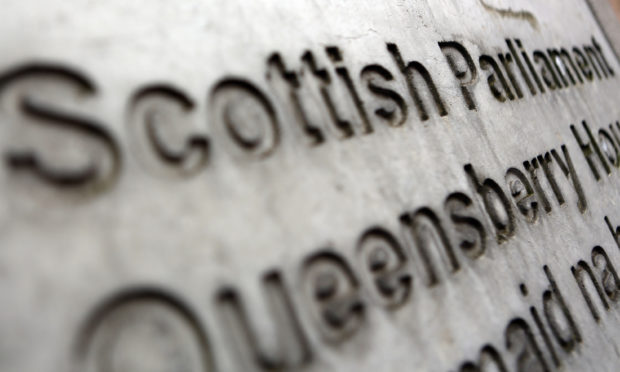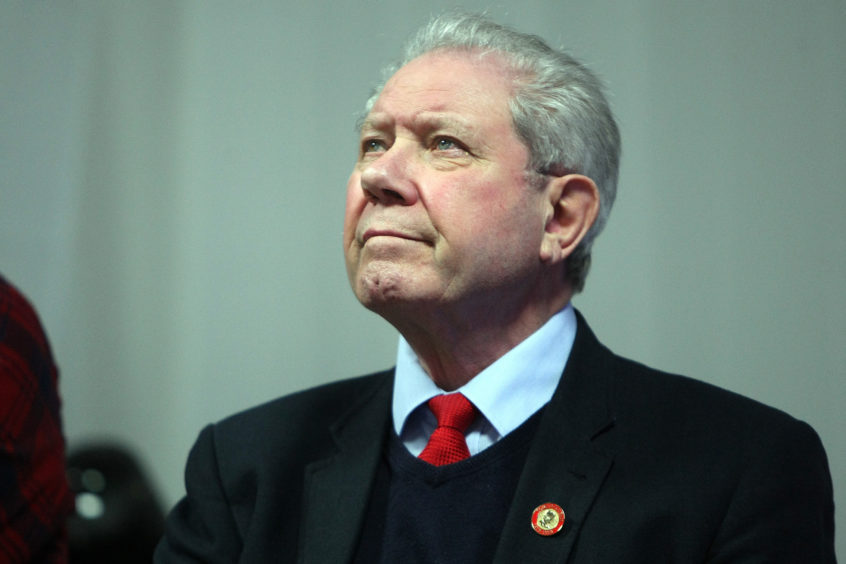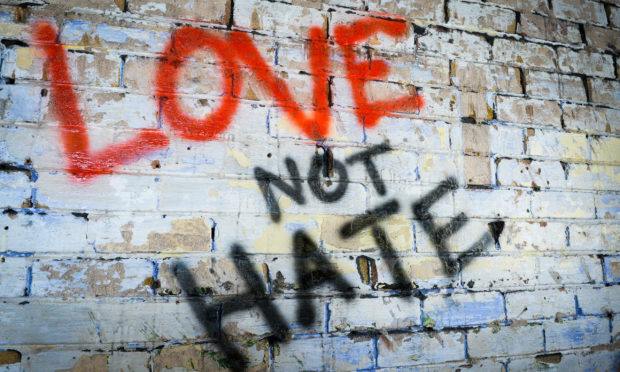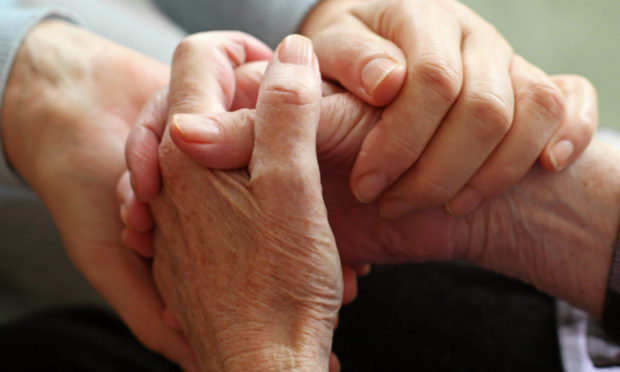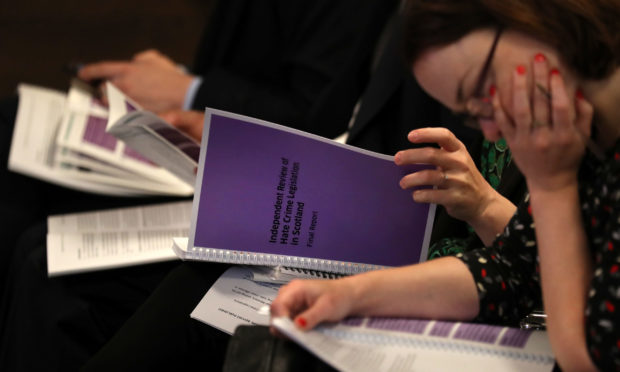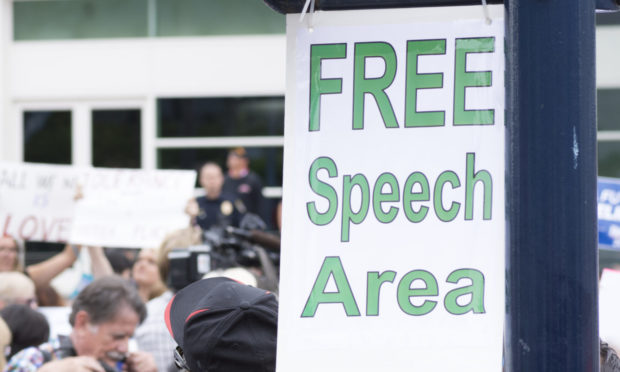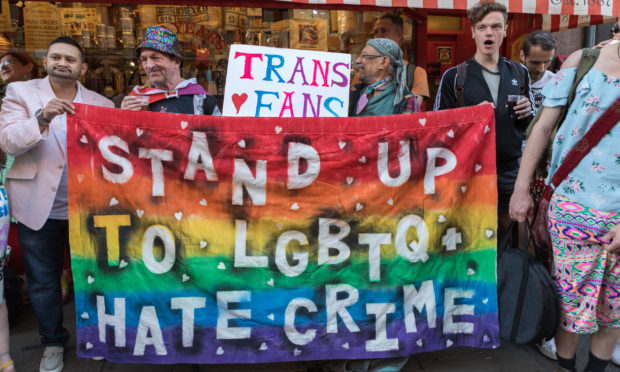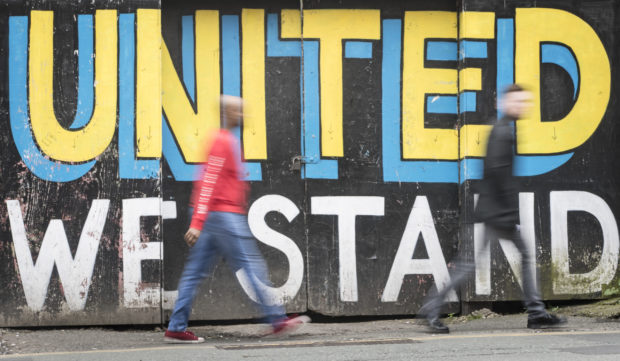The Hate Crime Bill has split opinion across Scotland since it was introduced to the Scottish Parliament earlier this year.
There are those who believe it will offer enhanced protections to marginalised groups in modern day society and send out a strong message that the country does not tolerate hate crime while there are others who have serious concerns it will threaten freedom of expression and the ability to voice controversial opinions.
To set the scene, it is important to look first at which offences can constitute a hate crime and what current protections are in place for protected groups in Scotland.
Offences are currently aggravated by prejudice against a victim’s race, religion, disability, sexual orientation or their transgender identity.
Hate crime can take many forms including verbal abuse or insults, assault and damage to property, but also online abuse on sites like Facebook or Twitter.
When a criminal is convicted of a hate crime, an ‘aggravation’ can be added to their sentence, meaning that if, for example, someone attacks an individual based on their race, then a racial aggravation can be added to the crime of assault.
The Scottish Government’s proposed legislation would incorporate the existing aggravating factors but also add the characteristic of age, with the potential to include sex at a later date so misogynistic harassment can become a standalone offence.
If passed by parliament, the Hate Crime Bill, will also make “stirring up of hatred” extend to all the characteristics, rather than just against race, which has been an offence in Scots law for decades.
The proposed changes follow a review of hate crime legislation by Lord Bracadale, in which he recommended age and gender should be incorporated into law.
As well as adding age to the list, the definition of transgender identity has been updated and a separate category created for variations in sex characteristics.
The characteristics listed within the Bill are:
- Age
- Disability
- Race, colour, nationality (including citizenship), or ethnic or national origins
- Religion
- Sexual orientation
- Transgender identity
- Variations in sex characteristics
Lord Bracadale’s independent review of Scotland’s hate crime laws recommended that these should be consolidated into a single piece of legislation.
The government has said it is following this recommendation with the aim of modernising consolidating and extending existing hate crime law “ensuring it is fit for the 21st century”.
However, critics of the bill argue the proposed legislation will threaten freedom of expression and prevent individuals from sharing controversial, challenging or even offensive views.
This is disputed by proponents of the bill who maintain these views can still be expressed as long as this is not done in a threatening or abusive way that is intended to stir up hatred or likely to stir up hatred.
‘Stirring up hatred’
The expansion of the ‘stirring up hatred’ offence is the aspect of the bill which has come under most criticism, with concerns it could stifle freedom of expression.
Currently in Scotland, the offence of ‘stirring up hatred’ only offers protection in respect to race but under the new legislation this will be expanded to include the characteristics of age, disability, religion, sexual orientation, transgender identity and variation in sex characteristics.
Under the proposals, it is an offence for a person to behave in a threatening, abusive or insulting manner, or to communicate threatening, abusive or insulting material to another person where in doing so, the person intends to stir up hatred against a group of people by reference to race, colour, nationality (including citizenship), or ethnic or national origin.
This would also apply in cases where the behaviour or communications are “likely” to result in hatred being stirred up against such a group.
Where the bill does create new offences of stirring up hatred to cover other characteristics such as sexual orientation or age, ‘insulting’ is not included as part of the conduct that may constitute a criminal offence.
Instead, the new powers would make it an offence for someone to behave in a threatening or abusive manner, or to communicate threatening or abusive material to another person where there is an intention or likelihood to stir up hatred in respect of the other characteristics.
Directors of performances or plays, in addition to the performer, could be prosecuted for committing this offence under the new legislation, which has also been highlighted by critics of the Bill.
Individuals can also be prosecuted under the proposed legislation for possession of inflammatory material in respect to the listed characteristics.
This may include displaying, publishing or distributing the material, such as on a sign, through websites blogs, podcasts or social media, either directly, or by forwarding or repeating material that originates from a third person.
There are protections in place, for example, when a person is in possession of the material for the purpose of alerting a journalist or where a person does not know and could not reasonably have known they were in possession of it, such as postal workers.
The Scottish Government said a separate approach for racial hatred is justified due to the “historical and structural nature of racism, the prevalence and seriousness of race hate crime in Scotland, and the impact this has on community cohesion”.
The powers contain provisions on freedom of expression provide that behaviour or material is not to be taken as threatening or abusive solely on the basis that it involves or includes discussion or criticism of religion or religious practices.
Gender at a later date?
Lord Bracadale, in his review of hate crime legislation, recommended that gender should be added to hate crime law.
However, leading women’s organisations, including Scottish Women’s Aid were strongly opposed to this approach and instead proposed a standalone offence on misogynistic harassment be developed, which the Scottish Government has said it is committed to “in principle”.
Although gender will not be included within the Scottish Government’s proposed legislation, a working group will be set up at the “earliest date possible” to look at creating the new offence, which could make Scotland a world leader in this area.
This group will look at how criminal law deals with misogyny, including whether there are gaps in legislation that could be filled with a specific offence on misogynistic harassment.
The group will also consider whether a statutory aggravation and/or stirring up of hatred offences in relation to the characteristic of sex should be included within hate crime law.
The Bill, in its current form, includes a power to allow the characteristic of sex to be added by regulations, at a future date, to the lists of characteristics to which the new hate crime legislation will apply.
The Scottish Government has said its “ongoing focus” is on responding to the coronavirus outbreak but added that the remit and membership of the group would be announced at the “earliest date possible” with work beginning shortly after that has been determined.
Blasphemy: A thing of the past?
Another key change to the legislation would see blasphemy decriminalised in Scotland – an offence no individual has been prosecuted for since 1843.
Proponents of the bill claim this will remove an “outdated law that is no longer considered necessary or appropriate”, and will follow the example of England and Wales, where it was abolished in 2008.
The bill does not include provision for a sectarianism statutory aggravation or stirring up of hatred offence as it was felt this would “overlap” with both race and religious offences, with the latter already capturing sectarian offending.
However, writing for The Spectator, Jim Sillars, former deputy leader of the SNP, said that Scottish ministers “boast” of repealing this law, they are “blind to creating new heresies for a new blasphemy law, much wider in its sweep and more injurious to free thinking and free speech, than the old one”.
What next?
The Scottish Parliament’s justice committee launched a call for views earlier this year on the Scottish Government’s plans to update hate crime laws, with a closing date for submissions set for July 24.
The views of the public will have to be processed and analysed, with the committee to consider how to take forward its scrutiny of the bill at stage one in light of the coronavirus outbreak.
Following the committee’s examination of the bill, MSPs would vote on whether it should continue to Stage 2.
